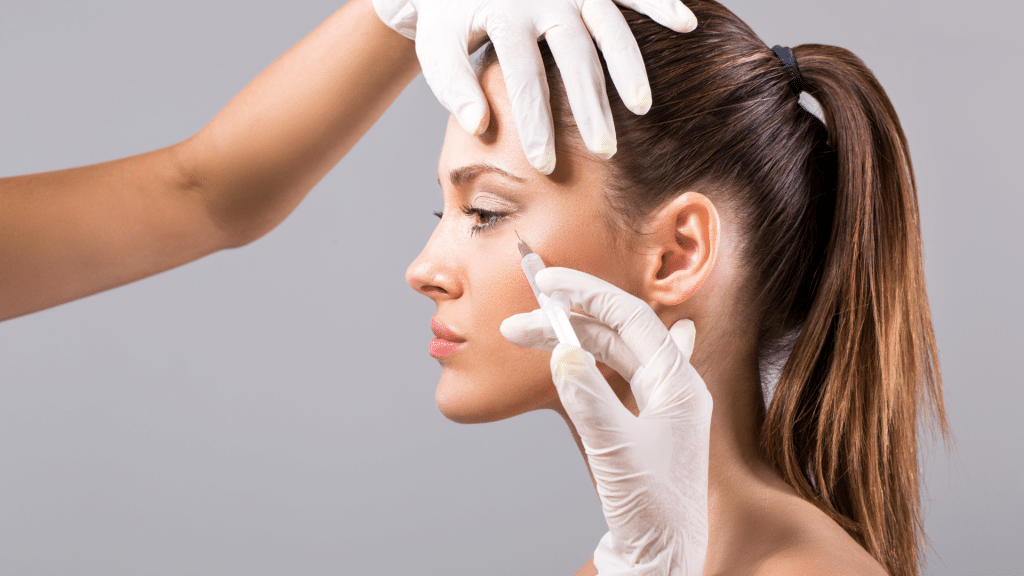Crow’s feet, those fine lines around the outer corners of your eyes, are a common sign of aging. These wrinkles can extend to your temple or upper cheek, and they are often exacerbated by sun exposure and smoking.
Dysport is gaining popularity in cosmetic dermatology because it treats crow’s feet effectively. Like Botox, Dysport relaxes facial muscles, reducing movement that causes wrinkles. It’s safe and effective, with results lasting up to four months. However, individual experiences may vary. Consult a qualified professional for optimal administration and to discuss safety considerations.
This article will explore how Dysport tackles crow’s feet, delve into its mechanism, and discuss what to expect during treatment.
Key Takeaways
- Dysport is a safe and effective solution for crow’s feet caused by aging, sun exposure, and smoking. It relaxes facial muscles, reducing wrinkles for up to four months.
- Dysport targets dynamic wrinkles by relaxing facial muscles; it requires higher doses than Botox but offers quicker and longer-lasting effects, making it a preferred choice for rejuvenation without frequent treatments.
- Patient selection and contraindications are crucial for safe Dysport treatment. Ideal candidates are 18-64 years old, without allergies to botulinum toxin or cow’s milk protein, certain muscle conditions, or specific medications. Tailored treatment is necessary for each individual’s success.
About: Medical Spa RX provides medical practices with premium products at the best prices. If you’re looking to buy Dysport for your practice, the sales representatives at Medical Spa RX can provide guidance.
Understanding Dysport for Crow’s Feet
Dysport is a neurotoxin that acts as a muscle relaxant. The FDA has approved It to smooth out moderate to severe frown lines between the brows and around the mouth. By calming down the muscles, Dysport helps reverse existing wrinkles and prevent new ones from forming.
This treatment stands out because it’s more diluted than Botox, meaning individuals need more units for similar results. Despite needing higher doses, many choose Dysport for its quick action in smoothing wrinkles, particularly crow’s feet, which are those pesky lines around your eyes that deepen with every smile or squint.
How Does Dysport Work for Treating Crow’s Feet?
This treatment targets the facial muscle contractions that contribute to crow’s feet. Once injected, Dysport works its magic by relaxing these muscles, leading to a softer look.
People who choose Dysport often find their skin looking refreshed and rejuvenated – like turning back the clock on aging around the eyes!
Patient Selection Criteria for Dysport Treatment

Finding the right people for Dysport treatment can feel like a puzzle, mainly as we aim to smooth away those unwelcome signs of aging. Here’s a little sneak peek into the world of ideal candidates for Dysport treatments.
- Age Range: Adults between 18 and 64 are prime candidates. This broad age range means many folks can say goodbye to those pesky lines.
- Targeted Concerns: Dysport is your new best friend in softening these wrinkles.
- Preference for Non-Invasive Options: Dysport treatments could be your hero without the cape. It’s perfect for people looking for less invasive options.
- Impact of Overall Health: Maintaining good health means you might see better results with Dysport treatments, as overall well-being plays a role in how well these treatments work.
- Quick Results: Those looking for quick fixes might find solace in Dysport, which starts working within a few days.
Contraindications for Dysport Treatment
Choosing suitable patients for Dysport treatment is critical. The process ensures safety and good results. Here are the reasons some people should not get Dysport:
- Allergies Consideration: If a patient is allergic to botulinum toxin or cow’s milk protein, saying “no” to Dysport is wise.
- Muscle Conditions: Those with myasthenia gravis or Eaton-Lambert syndrome must steer clear. Their muscles are already having a tough time without adding anything else.
- Medication Interaction: Some drugs don’t play nice with Dysport. It’s like inviting two archenemies to the same party – better avoided.
- Weak Muscles: Dysport might not be your friend if you’ve noticed weak muscles. The aim is to smooth out wrinkles, not cause more issues.
- Hypersensitivity Reactions: Hypersensitivity reactions sound as bad as they are, and yup, they’re a contraindication, too.
- General Health Status: Lastly, if one’s overall health isn’t top-notch or lifestyle factors might mess with the treatment, caution tape goes up around Dysport for them.
Treatment Protocols and Injection Techniques
Technique matters a lot for this treatment. Doctors need steady hands and a good understanding of facial anatomy to place the injections just right. They aim for spots that maximize benefits while minimizing potential side effects, like diplopia or double vision. After injection, results can show up in about 24 hours and might last up to five months.
Injection Techniques for Treating Crow’s Feet with Dysport

Dysport brings a fresh breeze to the world of wrinkle reduction. It’s all about relaxing those pesky muscles around your eyes that make you look older than you feel. Here are some guidelines:
- Clean and mark the area well before you start.
- Use a thin needle for the injections. We’re discussing a fine line between “just right” and “oops,” so precision is everything.
- Start with small doses. You can always add more, but you can’t return it once it’s in there.
- Aim for three points along each crow’s foot. Picture an invisible triangle—this helps spread Dysport’s love evenly.
- Keep the injections shallow; we’re not trying to reach the earth’s center here.
Factors Influencing Treatment Outcomes
Your skin’s age and stretchiness matter a lot in Dysport treatments. Also, how deep your crow’s feet are can change how well the treatment works.
- Age and Skin Elasticity: Skin elasticity suffers with age. Sagging and wrinkles become the main signs of aging. Think of it like this: Your skin used to snap back like a fresh rubber band, but over time, it gets stretched out and doesn’t entirely return to its original shape.
- The Severity of Crow’s Feet: The severity of crow’s feet is a significant factor in treatment outcomes with Dysport. Patients with deeper lines might need more attention during their Dysport sessions.
- Patient’s Overall Health and Lifestyle Factors: If someone is in good shape, eats well, and stays active, they might see better outcomes.
Dosing Considerations and Potential Complications
Doctors need to know how much Dysport to give for crow’s feet because every patient is different. Skin condition and muscle activity can change things a lot. The amount used usually varies from person to person.
Overdoing it can lead to complications. Dysport gone wrong can cause mild pain, redness at the injection site, and swelling after getting It for crow’s feet. Bruising, itching, nose and throat irritation, headaches, or a skin reaction can also occur.
Anyone feeling discomfort or noticing these side effects should keep the area clean and avoid touching it too much. Ice packs can lessen the swelling and pain. If things don’t get better or symptoms seem out of the ordinary, reaching out to a medical professional is crucial.
Showcasing Before and After Transformations

Image Courtesy of Center for Plastic Surgery
Doctors report success stories with Dysport over Botox, especially for those pesky lines around the eyes. Patients noticed their skin looked smoother and more youthful, thanks to these cosmetic injections’ fine line smoothing abilities. These examples highlight Dysport’s effectiveness in giving people a fresher look while enhancing periorbital rejuvenation.
Conclusion
So, there you have it—Dysport for Crow’s Feet isn’t just a game-changer; it’s a look-changer, too! Those before-and-after snaps don’t lie. Imagine saying goodbye to those annoying lines without any fuss.
It’s like giving the clock a little nudge backward but in the best way possible. And yes, while needles might make some of us squirm, the payoff is enormous.
FAQs
1. What exactly is Dysport, and how does it work on crow’s feet?
It relaxes the muscles around your eyes to smooth out those pesky lines we call crow’s feet.
2. Will getting Dysport hurt?
It’s more of a tiny pinch.
- How long does it take to see results from Dysport treatments?
You’ll start noticing a smoother look in just a couple of days.
4. Is there any downtime after getting Dysport injections?
Nope! You can jump right back into your day.
5. How long do the effects of Dysport last before I need another treatment?
After four months, you should visit your doctor for a touch-up to maintain smooth skin.
References
Witmanowski, H., & Błochowiak, K. (2020). The whole truth about botulinum toxin – a review. Postepy dermatologii i alergologii, 37(6), 853–861. https://doi.org/10.5114/ada.2019.82795
Carruthers, A., Carruthers, J., De Boulle, K., Lowe, N., Lee, E., & Brin, M. F. (2023). Treatment of crow’s feet and forehead lines with Botox (onabotulinumtoxinA): Development, insights, and impact. Medicine, 102(S1), e32496. https://doi.org/10.1097/MD.0000000000032496





















